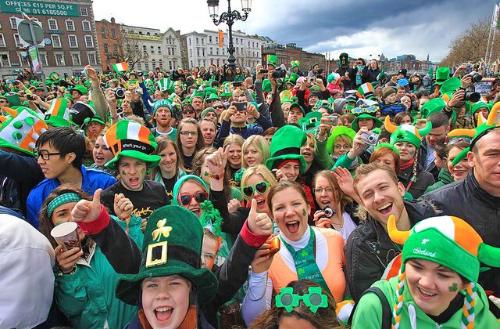History of St. Patrick's Day
Posted by

 npocpas1
–
npocpas1
–
 npocpas1
–
npocpas1
–

Unveiling the Rich Tapestry of St. Patrick's Day: A Journey into Its History and Origins
St. Patrick's Day, celebrated annually on March 17th, is a vibrant and widely embraced cultural event, but its origins are steeped in a history that extends far beyond the festivities we know today. The holiday is named after St. Patrick, the patron saint of Ireland, who is credited with bringing Christianity to the Irish people during the 5th century. Born in Roman Britain, St. Patrick was kidnapped by Irish raiders at the age of 16 and taken to Ireland as a slave. After escaping captivity, he returned to Ireland as a missionary, using the shamrock to explain the Holy Trinity and subsequently converting many to Christianity.

The date of March 17th marks the traditional death date of St. Patrick, believed to be around 461 AD. Initially, St. Patrick's Day was observed as a religious feast day, commemorating his contributions to Christianity in Ireland. Over time, the religious aspects merged with secular celebrations, evolving into the festive and widely recognized occasion we celebrate today. The first St. Patrick's Day parade, as we know them, took place not in Ireland but in the United States, where Irish immigrants in Boston organized a procession in 1737 to honor their heritage.
The symbolism of the color green and the shamrock is deeply rooted in the celebration's history. Legend has it that St. Patrick used the three-leafed shamrock to illustrate the concept of the Holy Trinity to the Irish people, and this connection has endured through the centuries. Additionally, the color green has been associated with Irish nationalism since the 18th century, and it gradually became the dominant hue in St. Patrick's Day celebrations.
In the 19th and 20th centuries, St. Patrick's Day evolved into a global celebration of Irish culture and identity. Irish communities around the world, from New York to Sydney, organize parades, festivals, and events to showcase their heritage. The day has become a symbol of unity and pride for people of Irish descent and those who simply want to partake in the joyous festivities.

In conclusion, St. Patrick's Day is more than just a day of revelry; it is a celebration with deep historical roots that intertwine religious significance, cultural pride, and a sense of community. From its humble beginnings as a religious feast day to its current status as a global celebration, the history and origins of St. Patrick's Day reflect a rich tapestry of traditions and stories that continue to be woven with each passing year.
St. Patrick's Day, celebrated annually on March 17th, is a vibrant and widely embraced cultural event, but its origins are steeped in a history that extends far beyond the festivities we know today. The holiday is named after St. Patrick, the patron saint of Ireland, who is credited with bringing Christianity to the Irish people during the 5th century. Born in Roman Britain, St. Patrick was kidnapped by Irish raiders at the age of 16 and taken to Ireland as a slave. After escaping captivity, he returned to Ireland as a missionary, using the shamrock to explain the Holy Trinity and subsequently converting many to Christianity.

The date of March 17th marks the traditional death date of St. Patrick, believed to be around 461 AD. Initially, St. Patrick's Day was observed as a religious feast day, commemorating his contributions to Christianity in Ireland. Over time, the religious aspects merged with secular celebrations, evolving into the festive and widely recognized occasion we celebrate today. The first St. Patrick's Day parade, as we know them, took place not in Ireland but in the United States, where Irish immigrants in Boston organized a procession in 1737 to honor their heritage.
The symbolism of the color green and the shamrock is deeply rooted in the celebration's history. Legend has it that St. Patrick used the three-leafed shamrock to illustrate the concept of the Holy Trinity to the Irish people, and this connection has endured through the centuries. Additionally, the color green has been associated with Irish nationalism since the 18th century, and it gradually became the dominant hue in St. Patrick's Day celebrations.
In the 19th and 20th centuries, St. Patrick's Day evolved into a global celebration of Irish culture and identity. Irish communities around the world, from New York to Sydney, organize parades, festivals, and events to showcase their heritage. The day has become a symbol of unity and pride for people of Irish descent and those who simply want to partake in the joyous festivities.

In conclusion, St. Patrick's Day is more than just a day of revelry; it is a celebration with deep historical roots that intertwine religious significance, cultural pride, and a sense of community. From its humble beginnings as a religious feast day to its current status as a global celebration, the history and origins of St. Patrick's Day reflect a rich tapestry of traditions and stories that continue to be woven with each passing year.
| Free forum by Nabble | Edit this page |